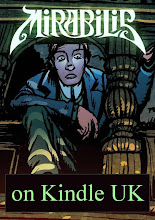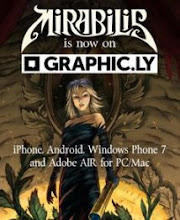The Writers’ Digest has an interesting article on “The 3 Self-Publishing Paths You Should Understand.”
In the past, self-publishing wasn’t really viable – hence the frequent confusion with vanity publishing. Everybody talks about how a self-published copy of Shadowmancer was discovered on a jumble sale table by a little nipper whose dad happened to be a publishing bigwig. But for every G P Taylor there’s a hundred J R Hartleys, forlorn, unread, and tweedily loitering.
Electronic formats change all that. You don’t need to shell out for print costs, but that’s not the real advantage. Where e-publishing comes into its own is the opportunity to get your work out in front of a hell of a lot of eyeballs. (Or, in case the Rev Mr Taylor should be reading, a heck of a lot.)
Face it: printing up a thousand copies and selling them for $20 a pop isn’t going to do you much good. So what you get to keep all the profits? After paying the printer, that leaves you with maybe $15,000. Better than the $1500 you might have got in royalties from the same sales, sure, but it’s still a drop in the ocean compared to all the work you did creating that content in the first place.
As Tim O’Reilly has said, your biggest problem is obscurity. That’s why it was always better in the past to take the 7% royalty from a publisher - because they would get your work out to a wide market. Ten years back, you’d often hear authors griping about being whittled down to 5% of net on book club editions – but that was still a good deal (or the best deal you’d get, anyway) because it was all helping to deal with your obscurity problem. Better to have 30,000 sales at $1.5 each than 3000 at $15, even though your revenue’s the same either way.
Now we have electronic publishing and it’s a new day. You can potentially reach anybody in the world. If you’ve just written a literary novel I’d still urge you to take it first to a traditional print publisher. But if what you’re working on is, for example, a comic – well, unless Marvel are showing an interest, you could do a lot worse than going the Freakangels route and sticking it up online.
You could also go to an e-publisher like Genus Apps and aim to get an iPhone version. Or you could license (or code up) a comic reader app and do it yourself through App Store. E-tail is already ahead of retail and the gap is getting bigger. You can reach ten times as many customers through iTunes as all the major bookstores put together.
Nobody will pay to read a comic on the web, but a surprising number of people who read your web comic for free will then ask about buying a print copy. At the same time, people will pay for a comic on their iPhone because that makes it convenient; they can read it on the train or during a coffee break. The 70% of sale price that Apple gives you back makes it tempting to charge, but don’t be reluctant to give the iPhone version away free to start off. You can reach millions of people - but so can everybody else with a comic. O’Reilly’s Rule is so important that it bears repeating:
Your biggest problem is obscurity.
And where does this leave print? Truth is, the publishers benefit just as much as the authors, because they need all the help they can get swimming against the tide of consumer indifference. Take your project to a publisher when you’ve had 650,000 verifiable downloads – as Cory Doctorow has with just one of his novels – and they’ll get a contract under your nose before your backside hits the chair. And you can take that to the bank.
Simon Bisley paints Jesus
-
To get us in the mood for Christmas here's some Simon Bisley...
The item was described thus...
Here we have a rare print, dating to the 70s/80s, of Simon ...























Wow, you don't half talk some sense Mr Morris. I've been thinking of revamping Shadowquake & Shnookie for iPhone, so Genus is definitely something to be looking into - thanks for sharing.
ReplyDeleteThanks, Nelson. I'm not sure my wife would agree about the talking sense part, though. She always gives me a very dubious look when I start on about giving content away for free.
ReplyDeleteShadowquake & Shnookie on iPhone - I'm there for that! Genus will likely be willing to do the conversion in-house if you provide the various layers. Talk to Helen and say I sent you :)
Just a bit of advice for future endeavors: The company I work for has put several games on the iPhone, and the only one that got noticed was the one that we got them to promote and put on their "New and Noteworthy" page. We saw the downloads increase tenfold on the days it was there! So if you are trying to break into the AppStore, get on the front pages if you can - it is all too easy to get lost in the sea of products.
ReplyDeleteSeriously good advice!
ReplyDeleteMany thanks for this guys from someone who needs all the advice on this subject that they can glean.